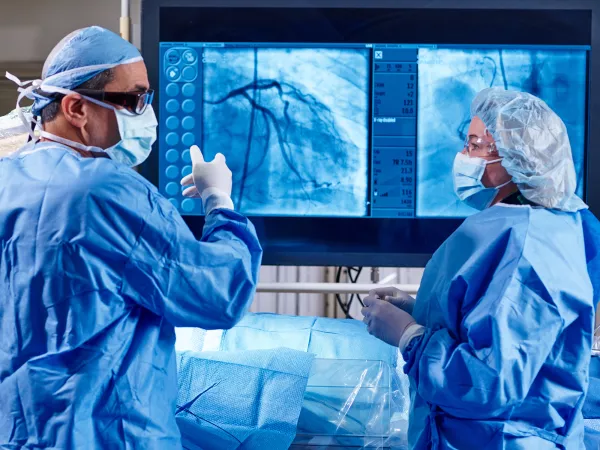Understanding hypertension with Cardiology: Symptoms, risks, and solutions
Comprehending the Value of Cardiology in Modern Medical Care Services
Cardiology plays a vital duty in modern-day healthcare, particularly as heart problem remains to be the leading reason for death worldwide. Breakthroughs in diagnostics and treatment have transformed client care, enabling earlier interventions and improved results. In addition, the change in the direction of preventative cardiology encourages people to handle their health and wellness proactively. As modern technology remains to advance, the assimilation of cutting-edge remedies might even more redefine cardiology's effect on public health, prompting a closer examination of arising fads and their ramifications.
The Occurrence of Heart Problem and Its Impact on Public Wellness
Heart illness remains the leading reason of fatality internationally, its effect extends much beyond specific clients to affect public wellness systems and economic situations. The high occurrence of cardiovascular disease positions a considerable pressure on health care resources, demanding enhanced financing for treatment, recovery, and prevention programs. Public health and wellness initiatives need to attend to danger factors such as weight problems, smoking, and inactive way of livings, which contribute considerably to the increasing occurrence of heart conditions.Moreover, the economic problem connected with cardiovascular disease is enormous, incorporating not just direct clinical costs however likewise indirect expenditures connected to shed performance and premature death. Communities face difficulties in taking care of these costs, typically bring about differences in healthcare gain access to and results. As the populace ages and lifestyle-related threats proceed to escalate, the urgency for effective cardiology treatments becomes extremely important. Addressing heart disease is not only a matter of private health and wellness however likewise an important public health and wellness concern.
Advancements in Cardiac Diagnostics and Imaging Techniques
Recent developments in heart diagnostics and imaging techniques have transformed the field of cardiology, boosting the capacity to keep track of and find heart diseases. Techniques such as heart MRI, CT angiography, and echocardiography have actually ended up being progressively advanced, offering detailed pictures of cardiac structures and features. These techniques enable the early recognition of problems like coronary artery condition, cardiac arrest, and valvular disorders.Moreover, improvements in non-invasive diagnostics, such as wearable modern technology and remote tracking gadgets, have encouraged individuals and health care companies. These tools promote real-time monitoring of heart rhythms and other crucial indications, causing timely treatments. Additionally, artificial knowledge is being integrated right into imaging analysis, boosting precision and efficiency in medical diagnosis.
Developments in Therapy Options for Heart Issues
Recent advancements in cardiology have caused substantial developments in treatment options for heart problems. These consist of advanced medical techniques that improve step-by-step results and arising medications that use new methods for therapy. As the area evolves, these advancements play a vital function in boosting person care and end results.
Advanced Surgical Techniques
Innovations in surgical strategies have actually transformed the landscape of cardiology, using brand-new expect individuals with heart disease. Minimally invasive procedures, such as catheter-based treatments, have actually greatly decreased recuperation times and medical facility remains. Strategies like robotic-assisted surgical procedure enhance precision, enabling doctors to browse complex anatomical structures with higher precision. In addition, advancements in imaging technology promote real-time visualization during procedures, improving results. Transcatheter aortic valve substitute (TAVR) exhibits an innovation in dealing with aortic constriction, making it possible for valve replacement without open-heart surgery. Furthermore, hybrid techniques that integrate surgical and catheter-based methods supply customized options for different cardiac issues. These advanced surgical strategies not only enhance person safety and security yet likewise broaden treatment alternatives, emphasizing the critical role of technology in modern-day cardiology methods.
Emerging Drugs and Treatments
As the landscape of cardiology continues to advance, arising medications and treatments play a pivotal duty in enhancing treatment choices for heart conditions. Advancements such as novel anticoagulants and advanced lipid-lowering representatives have actually changed the administration of cardiovascular diseases, substantially lowering individual morbidity and death. Furthermore, the advancement of genetics treatments and regenerative medicine uses appealing methods for treating problems previously regarded irreversible. Professional trials are consistently exposing the efficiency of these treatments, pushing the limits of typical treatments. In addition, the combination of electronic health innovations helps with individualized medicine, permitting tailored therapy strategies based on hereditary and way of living elements. Collectively, these improvements emphasize the dynamic nature of cardiology, enhancing person outcomes and redefining standards of care in contemporary medical care.
The Role of Preventive Cardiology in Client Treatment
Preventative cardiology plays an essential function in individual treatment by concentrating on the recognition of threat variables that add to heart problem. With way of living alteration approaches and very early discovery techniques, doctor can properly reduce the occurrence of cardio occasions - Cardiology care. This aggressive technique not just enhances individual results however likewise promotes lasting health
Danger Factor Identification
While cardiovascular illness remain a leading reason for morbidity and mortality worldwide, reliable threat aspect identification functions as a cornerstone of preventative cardiology. Recognizing risk aspects such as hypertension, family members, diabetic issues, and hyperlipidemia history is essential for very early intervention. Healthcare professionals make use of different evaluating techniques to assess these variables, permitting customized safety nets. In addition, comprehending a patient's way of life choices, such as smoking cigarettes and physical inactivity, even more educates danger assessments. This detailed assessment makes it possible for clinicians to create customized care strategies targeted at mitigating dangers. By focusing on danger variable identification, health care systems can enhance individual outcomes and minimize the total concern of cardio diseases, eventually adding to boosted public health approaches and resource allotment.
Way Of Living Modification Techniques
A plethora of studies highlights the essential role of way of life alteration strategies in decreasing heart disease risk. These techniques include nutritional changes, increased physical activity, cigarette smoking cessation, and weight administration. By taking on wikipedia reference a heart-healthy diet regimen rich in fruits, veggies, entire grains, and lean proteins, individuals can lower cholesterol levels and high blood pressure. Routine physical activity enhances the heart and improves general cardio wellness. Additionally, quitting smoking significantly decreases the threat of heart illness and boosts healing prices for those with status quo. Weight monitoring further contributes to cardiovascular health by alleviating other danger variables such as diabetes and hypertension. Carrying out these way of living changes not only advertises individual wellness yet likewise serves as a foundation of preventative cardiology in patient care.
Early Detection Strategies
Way of life modifications considerably add to minimizing cardio disease threats, however they are most efficient when coupled with early detection methods. Preventive cardiology highlights the relevance of recognizing prospective heart concerns before they rise right into severe conditions. Strategies such as blood stress monitoring, cholesterol testing, and progressed imaging technologies like echocardiograms play crucial duties in assessing cardiovascular health and wellness. Biomarkers and genetic screening also boost the precision of very next page early detection, permitting for tailored preventative methods. Regular heart danger evaluations equip healthcare carriers to intervene proactively, possibly avoiding heart strikes and strokes (Cardiology). By integrating these very early discovery methods right into regular care, individuals can gain from prompt way of living interventions and targeted therapies, inevitably improving results and boosting lifestyle
Integrating Technology Into Cardiology Practices
As improvements in modern technology continue to reshape different areas, the integration of innovative devices and systems right into cardiology practices has ended up being crucial for enhancing client treatment and end results. Telemedicine platforms allow cardiologists to check patients remotely, enhancing accessibility to care while lowering the worry on healthcare centers. Wearable tools, such as smartwatches, make it possible for constant heart price monitoring, notifying both physicians and individuals to potential problems in real-time. Furthermore, man-made knowledge (AI) is being used to examine huge quantities of heart information, helping in early diagnosis and customized treatment plans. Advanced imaging techniques, including 3D echocardiography, enhance visualization of heart structures, leading to more specific treatments. Digital health and wellness records (EHRs) streamline client information management, making certain that cardiologists have prompt accessibility to important data. Together, these technical innovations are transforming cardiology, advertising positive management and boosted wellness results for patients with cardio problems.
The Value of Client Education And Learning and Interaction
Person education and involvement play a critical role in the administration of cardio health and wellness. By equipping individuals with knowledge regarding their problems, treatment alternatives, and way of life changes, doctor equip people to take an active function in their treatment. This proactive technique can lead to enhanced adherence to suggested medications, dietary adjustments, and exercise regimens, eventually lowering the danger of complications.Engagement additionally cultivates a solid patient-provider relationship, motivating open interaction and trust fund. When patients feel notified and entailed, they are much more likely to voice worries and ask inquiries, which can lead to better scientific end results. In addition, instructional resources, such as workshops or digital platforms, can boost understanding and advertise self-management strategies. In general, prioritizing individual education and learning and interaction is crucial for enhancing cardiovascular health, improving lifestyle, and decreasing health care expenses related to cardio conditions.
Future Fads in Cardiology and Their Possible Influence

Regularly Asked Concerns
What Way Of Life Changes Can Reduce Cardiovascular Disease Threat?
The present concern addresses lifestyle changes that can substantially minimize cardiovascular disease danger. Cardiology. Embracing a balanced diet regimen, taking part in regular exercise, keeping a healthy weight, managing stress and anxiety, and preventing tobacco can notably boost cardiovascular wellness
Exactly How Can I Recognize Very Early Indications of Heart Troubles?
Acknowledging early signs of heart troubles includes monitoring signs such as chest discomfort, shortness of breath, exhaustion, and irregular heart beat. Timely recognition of these signs can motivate required clinical assessment and treatment for much better end results.
What Are the Differences In Between Cardiologists and Cardiac Surgeons?
The differences in between cardiologists and cardiac doctors lie in their duties; cardiologists mainly detect and manage heart conditions with non-invasive methods, while heart cosmetic surgeons execute surgeries to remedy architectural heart issues. Each plays a crucial, distinctive role.

How Frequently Should I Get My Heart Wellness Checked?
The regularity of heart medical examination differs based on individual threat elements. Normally, adults should undergo assessments every one to 2 years, while those with status quo may call for more regular analyses as encouraged by health care specialists.
What Role Does Genetics Play in Heart Problem Risk?
Genes substantially affects cardiovascular disease danger, with domestic patterns showing inherited conditions. Certain genes can predispose people to high blood pressure, cholesterol problems, and other cardio troubles, highlighting the importance of hereditary screening in evaluating heart health and wellness. Heart disease continues to be the leading cause of death globally, its influence extends much beyond private patients to impact public health systems and economic climates. Public health efforts must attend to danger variables such as weight problems, smoking cigarettes, and inactive way of livings, which contribute considerably to the climbing incidence of heart conditions.Moreover, the financial burden connected with heart condition is enormous, including not just direct medical prices but likewise indirect costs connected to lost efficiency and early death. Preventive cardiology plays an essential function in person treatment by concentrating on the identification of risk aspects that add to heart condition. Artificial intelligence (AI) and maker understanding are boosting diagnostics and client tracking, making it possible for very early detection of heart diseases. The differences between cardiologists and cardiac cosmetic surgeons exist in their functions; cardiologists largely detect and handle heart problems with non-invasive approaches, while heart doctors perform surgical procedures to correct structural heart issues.